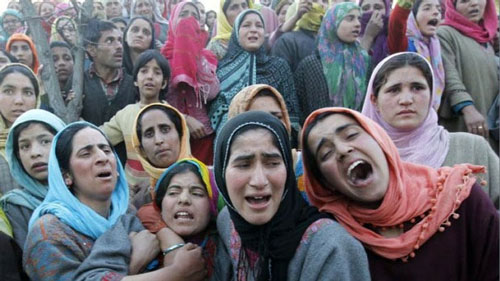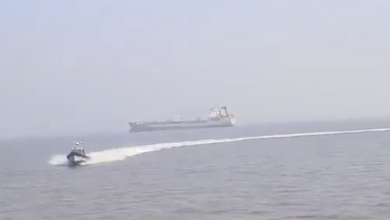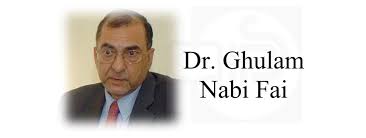
 October 27, 1947, is remembered by Kashmiris worldwide as the “Blackest Day” in their history. This day marks India’s invasion of Jammu and Kashmir, viewed as a blatant act of aggression lacking legal or moral justification. It was an assault on the political and democratic rights of the Kashmiri people, violating international law and undermining their fundamental rights.
October 27, 1947, is remembered by Kashmiris worldwide as the “Blackest Day” in their history. This day marks India’s invasion of Jammu and Kashmir, viewed as a blatant act of aggression lacking legal or moral justification. It was an assault on the political and democratic rights of the Kashmiri people, violating international law and undermining their fundamental rights.
The suffering that befell Kashmiris on this day has not only plunged their lives into misery but also jeopardized peace and security in the region, posing a threat to global stability. Consequently, Kashmiris look to the international community for meaningful support to alleviate their plight and help restore peace in the region, which will certainly be a long-leap forward towards the quest for universal peace and harmony.
Seventy-seven years ago today, Indian armed forces first landed at Srinagar airport with the intent to deny Kashmiris their birthright of self-determination. This act blatantly violated the terms of the Partition Plan, relevant provisions of the Indian Independence Act, the UN Charter, and the Universal Declaration of Human Rights.
The Indian Independence Act, passed by the British Parliament on July 18, 1947, mandated the division of British India into two sovereign states: the Hindu-majority areas formed the state of India, while the Muslim-majority areas became the state of Pakistan. The objective of the Partition Plan of June 3, 1947 was to divide the provinces in the west and Bengal in the east, leaving Muslims majority areas in Pakistan and those with Hindu majority with India. Of the main routes by which Kashmir could be reached, two roads passed through areas which could be expected to be allocated to Pakistan: the first via Rawalpindi to Srinagar and the other via Sialkot, Jammu and the Banihal Pass. A third route, which was no more than a dirt track existed via, the district of Gurdaspur which comprised of four Tehsils of Shakargarh, Batala, Gurdaspur and Pathankote. From Pathankote the route passed over Madophur across the Ravi River to Kathua in the state of Jammu and Kashmir. Under the terms provided in the first schedule of the Indian Independence Act, all theGurdaspur district, with a 51.14 percent Muslim majority had been assigned to Pakistan, which meant that all these routes would have fallen under the control of Pakistan. This would have totally isolated India from Kashmir, had there not been a Mountbatten-Radcliffe-Nehru combines’ perfidy to alter the boundary award and give Gurdaspur district to India. Thus, the Indian military occupation of a major part of Jammu and Kashmir blatantly violated both the first schedule of the Indian Independence Act and the terms of reference of the partition plan.
Following the Partition Plan, Muslims in the Jammu region faced brutal repercussions for their aspirations to join Pakistan during October and November 1947. Many were massacred, and countless others were forced to flee to West Punjab. These atrocities were carried out by extremist groups such as the RashtriyaSwayamsevakSangh (RSS), Jang Sang, and Sikhs, with support from Maharaja Hari Singh’s forces. The RSS played a key role in planning and executing the violence, leading to an estimated 300,000 Muslim deaths in the Jammu region.
Scholar Ian Copland notes that the Jammu and Kashmir administration conducted a pogrom against its Muslim subjects in Jammu partly as revenge for the earlier Poonch rebellion. Observers suggest that Maharaja Hari Singh and his administration aimed to alter the region’s demographics by targeting the Muslim population to secure a Hindu majority.
According to Scholar IlyasChattha and Jammu journalist VedBhasin, the Jammu riots were executed by members of the RSS who were joined by the refugees from West Pakistan, and were supported strongly by Hari Singh and his administration with the main aim to change the demographic composition of Jammu region and ensure a non-Muslim majority. Bhasin states, the riots were “clearly” planned by the activists of RSS. He says that the massacres took place in the presence of the then Jammu and Kashmir’s Prime Minister Mehr Chand Mahajan and the governor of Jammu, Lala Chet Ram Chopra.(Chattha, Partition and its Aftermath 2009, p. 182, 183./VedBhasin (17 November 2015). “Jammu 1947”. Kashmir Life.)
Observers have noted that the Akali Sikhs and some former members of the Indian National Army (INA) also participated in this violence along with the RSS and state forces. (Copland, The Abdullah Factor, p. 244. .-/ Hassan, Amtul (2006). Impact of Partition: Refugees in Pakistan: Struggle for Empowerment and State’s Response. Regional Centre for Strategic Studies.p. 58.ISBN 9788173046988-/Dutta, Madhusree; Flavia; Adarkar, Neera (1996). The Nation, the State, and Indian Identity.Popular Prakashan.p. 145.ISBN 9788185604091. -/ Hajari, Nisid (9 June 2015). Midnight’s Furies: The Deadly Legacy of India’s Partition. Houghton Mifflin Harcourt.p. 209.ISBN 9780547669243.)
The editor of The Statesman Ian Stephens said that 500,000 Muslims, “the entire Muslim element of the population”, was eliminated and 200,000 “just disappeared”.
The Pakistani newspaper Nawa-i-Waqt reported that more than 100,000 Jammu refugees had arrived in Sialkot by 20 November 1947. (Chattha, Partition and its Aftermath 2009, p. 185.)
Then the Sikh ruler of Patila had already met MahrajaHari Singh in his palace at Srinagar in the last week of July 1947. He had already acceded to India. His Patiala State troops had already, therefore, become part of Indian Army and were already stationed in Srinagar since, at least, October 17,1947. Patiala troops were already garrisoned in Jammu, even before that. Without the complicity of all concerned parties, the stationing of Patiala State Troops in Jammu and Srinagar was simply impossible. (Alaistar Lamb, Kashmir A Disputed Legacy (1991).
Here are the killing figures from 1947 to 1989 in IIOJK:

This bloodbath was aimed at altering the demographic composition of Jammu and Kashmir to favor India in any future referendum. Historians regard this massacre as one of the worst examples of genocide in Jammu and Kashmir.
The table below illustrates how the Muslim population has been reduced across various districts of Jammu:

Alongside the military invasion, the Indian government coerced Dogra Maharaja Hari Singh of Jammu and Kashmir to accede to India. A document of accession, drafted in New Delhi, was presented to the Maharaja for his signature. There is significant controversy over whether he actually signed it. Notable authors, including the prominent British writer Alistair Lamb, have argued against India’s claim that the document was duly signed, asserting that it was never executed by the Maharaja.
Despite this, the Indian government sent what is considered a fake document to the then Governor-General of India, Lord Mountbatten. In his acceptance of the accession, Mountbatten stated that in cases where the issue of accession is disputed, the decision should reflect the wishes of the people of the state. He emphasized that the question of Kashmiris’ accession “should be settled by a reference to the people.” Consequently, he signed the document provisionally, pending the final disposition of the state by the people of Jammu and Kashmir.
The Indian military invasion of Jammu and Kashmir was entirely against the aspirations of the Kashmiri people. With a predominant Muslim population, Kashmiris believed they would naturally become part of Pakistan, as stipulated by both the Indian Independence Act and the Partition Plan, which designated contiguous Muslim-majority areas of the subcontinent to form Pakistan.
Kashmiris vigorously resisted the Indian invasion, both politically and through armed struggle. They fought bravely and were on the verge of capturing Srinagar when then-Indian Prime Minister Jawaharlal Nehru brought the Kashmir issue to the United Nations on January 1, 1948. This move led to several resolutions favorable to Kashmiri aspirations, accepted by both India and Pakistan. One of these resolutions called for a ceasefire as a first step toward a permanent resolution of the Kashmir dispute.
The ceasefire took effect before midnight on January 1, 1949, in accordance with the UN resolution adopted on August 13, 1948. This resolution proposed a cessation of hostilities, noting that ongoing conflict could endanger international peace and security. Part III of the resolution states: “The Government of India and the Government of Pakistan reaffirm their wish that the future status of the state of Jammu and Kashmir shall be determined in accordance with the will of the people.”
In its resolution of January 5, 1949, the United Nations stipulated that the Kashmir dispute would be resolved through a free and impartial plebiscite. The resolution outlined the methodology for appointing a plebiscite administrator and explicitly stated in Article 1: “The question of the accession of the State of Jammu and Kashmir to India or Pakistan will be decided through the democratic method of a free and impartial plebiscite.” However, India later backtracked on this commitment, citing various pretexts, and refused to implement the UN resolutions regarding Kashmir.
For the past thirty-six years, India has engaged in state terrorism in occupied Jammu and Kashmir. According to data from the Research Section of Kashmir Media Service, from January 1989 to October 2024, the figures are staggering:

These human rights violations, protected under international declarations, are being perpetrated by Indian occupation forces. Kashmiris remain deprived of their right to self-determination, facing killings, torture, property deprivation, harassment, and arbitrary arrests on false charges, and women are harassed, dishonoured and even imprisoned.Their freedom of expression and movement is severely restricted, keeping them in a state of servitude for the past 77 years.
India’s military aggression contradicts the UN Charter, , which clearly states that, “member (states) shall settle their disputes peacefully and refrain from the use or threat of force and interference in territorial unity and political independence of any state”.
Since the abrogation of Jammu and Kashmir’s special status on August 5, 2019, the BJP-led Indian government has imposed a severe military siege. While intensifying the Hindutva ideology of the RashtriyaSwayamsevakSangh, it has also pursued a settler colonial agenda aimed at transforming the Muslim majority into a minority. This includes enacting brutal laws, introducing new domicile rules, and granting domicile status to hundreds of thousands of non-Kashmiri Hindus.
In light of these actions, observing October 27 as Black Day has become increasingly important for the oppressed people of Jammu and Kashmir. It serves as a call for unity and a powerful message to India and the global community that they will not accept subjugation and will continue to strive for their freedom.
The Kashmir dispute has gained renewed global attention since August 2019, underscoring the urgent need for resolution and justice.








